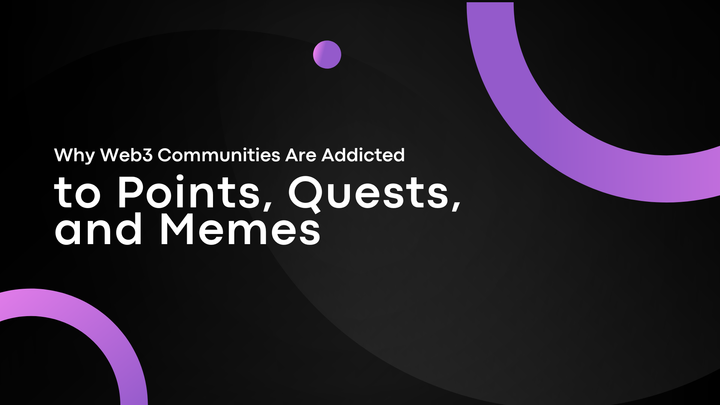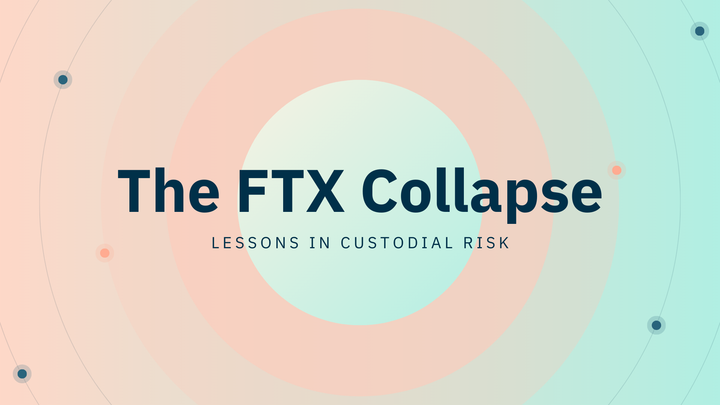Unifying the Tides: How Mitosis is Reshaping Liquidity in a Fragmented DeFi World
Overview: The Persistent Challenge of Fragmented Capital in Decentralized Finance
The promise of(https://example.com/defi-explained) has always been a global, open financial system, free from traditional intermediaries. However, as the ecosystem expanded, a critical bottleneck emerged: liquidity fragmentation. This pervasive issue has historically hindered DeFi's growth, leading to inefficiencies, higher costs, and a disjointed experience for participants. This article will delve into the landscape of DeFi before the advent of comprehensive solutions, illustrating the challenges posed by scattered capital. We will then introduce the Mitosis protocol, a pioneering force that stepped in to address this fundamental problem, offering a new paradigm for unified cross-chain liquidity and a more seamless decentralized future.
Introduction: The Early Promise and Unforeseen Hurdles of DeFi
The early days of(https://example.com/defi-explained) were characterized by a fervent belief in a new financial paradigm: permissionless access, transparency, and direct peer-to-peer interactions. Visionaries imagined a world where anyone, anywhere, could access financial services without banks or brokers. Initial innovations, such as decentralized exchanges (DEXs) and lending protocols, quickly demonstrated the power of this new model. However, as the ecosystem matured and new blockchain networks emerged, an unforeseen challenge began to cast a long shadow over DeFi's ambitious goals: the increasing fragmentation of liquidity, which threatened to undermine the very efficiency it sought to create.
The Genesis of DeFi: A Vision of Open and Accessible Finance
The initial allure of(https://example.com/defi-explained) stemmed from its core principles: financial inclusion, censorship resistance, and composability. Early protocols aimed to replicate traditional financial services on a blockchain, offering lending, borrowing, and trading without centralized control. This vision attracted a wave of innovators and early adopters, eager to participate in a financial system built on code rather than trust. The foundational idea was to create a single, interconnected global market where assets could flow freely, enabling unprecedented levels of capital efficiency and financial innovation.
Early DeFi Landscape: Innovation within Isolated Silos
In its nascent stages,(https://example.com/defi-explained) primarily flourished on a few dominant blockchain networks, most notably Ethereum. Protocols like Uniswap for swapping and Compound for lending quickly gained traction, demonstrating the power of automated market makers and algorithmic money markets. However, as other Layer 1 blockchains (e.g., Binance Smart Chain, Avalanche, Solana) and Layer 2 scaling solutions (e.g., Polygon, Arbitrum, Optimism) emerged, each with its own unique advantages in terms of speed or cost, liquidity began to spread. This led to a landscape where innovation was abundant, but often confined within isolated blockchain silos, preventing seamless interaction.
The Rise of Multi-Chain Ecosystems: A Double-Edged Sword
The proliferation of diverse Layer 1s and Layer 2s was a natural progression, driven by the need for greater scalability and lower transaction fees than early blockchains could offer. Each new chain brought its own set of developers, users, and specialized applications. While this multi-chain expansion was beneficial for overall ecosystem growth and technological advancement, it inadvertently exacerbated the problem of liquidity fragmentation. Assets deposited on one chain could not easily be used on another, creating walled gardens of capital and hindering the vision of a unified financial system.
Understanding Liquidity Fragmentation: The Core Problem Defined
Liquidity fragmentation refers to the phenomenon where the total available capital for trading or lending a specific asset is scattered across multiple, disconnected blockchain networks and protocols. Instead of a single, deep pool, liquidity is splintered into numerous smaller pools. This leads to several inefficiencies: higher slippage for large trades, as there is insufficient depth in any single pool; poor price discovery across markets; and overall suboptimal capital utilization for liquidity providers who must spread their assets thinly across various platforms.
Consequences for Users: High Costs and Disjointed Experiences
For the everyday participant in(https://example.com/defi-explained), liquidity fragmentation translated into a frustrating and often costly experience. Moving assets between chains typically required using cross-chain bridges, which often incurred high fees, significant delays, and considerable security risks. Users frequently faced the dilemma of choosing between a chain with lower fees but less liquidity, or a more liquid chain with higher transaction costs. This disjointed experience hindered seamless participation in multi-chain strategies and limited access to the full spectrum of DeFi opportunities.
Consequences for Protocols: Stifled Growth and Intense Competition
(https://example.com/defi-protocols) also bore the brunt of liquidity fragmentation. New projects launching on emerging chains struggled to bootstrap sufficient liquidity, as liquidity providers were hesitant to commit capital to isolated environments. This led to intense competition for liquidity providers (LPs), often through unsustainable incentive programs that attracted "mercenary capital" – LPs who would quickly move their funds once rewards diminished. This constant battle for liquidity diverted resources from core product development and hindered the long-term growth and stability of many promising protocols.
How did the reliance on "mercenary capital" in early DeFi exacerbate liquidity fragmentation and what were its long-term consequences for protocol sustainability?
Early Attempts to Bridge the Divide: Centralized and Wrapped Solutions
In response to fragmentation, several solutions emerged. Centralized exchanges (CEXs) served as de facto bridges, allowing users to deposit assets from one chain and withdraw them on another, but at the cost of decentralization and control. Wrapped assets (e.g., wBTC on Ethereum) allowed assets from one chain to be used on another, but still required a trusted custodian or a complex minting/burning process. Early cross-chain bridges offered decentralized alternatives but often came with their own set of security vulnerabilities and limited liquidity, failing to provide a truly seamless and secure solution for widespread asset flow.
The Need for a New Paradigm: Beyond Traditional Bridging
Despite these early attempts, a fundamental gap remained. The existing solutions were often centralized, capital-inefficient, or prone to security exploits. What DeFi truly needed was a new paradigm: a decentralized, secure, and capital-efficient way to unify liquidity across all chains, allowing assets to flow as if they resided on a single, massive network. The challenge was to create a foundational layer that could abstract away the complexities of cross-chain communication and provide deep, shared liquidity without compromising the security or decentralization ethos of Web3.
Enter Mitosis: A New Vision for Unified Liquidity
This is precisely the void that the Mitosis protocol stepped in to fill. Mitosis emerged as a pioneering Layer 1 blockchain specifically designed to serve as a dedicated liquidity layer for the entire Web3 space. Its core mission is to address the pervasive problem of liquidity fragmentation by creating a unified, omni-chain liquidity solution. Mitosis aims to redefine the liquidity provision experience for both DeFi projects and individual liquidity providers, making cross-chain liquidity more attractive and efficient.
Ecosystem-Owned Liquidity (EOL): Mitosis's Core Innovation
At the heart of the Mitosis protocol's approach is the innovative concept of Ecosystem-Owned Liquidity (EOL). Unlike traditional models that rely on transient incentives, EOL seeks to create a sustainable, community-managed pool of capital accessible across diverse blockchain environments. This model pools liquidity from individual providers under a(https://docs.mitosis.org/concepts/mitosis-dao) governance structure. This allows individual users to collectively provide institutional-level liquidity, enhancing their bargaining power and benefiting from economies of scale.
The Mitosis Vault System: Aggregating Global Liquidity
Central to the Mitosis protocol is the innovative Mitosis Vault system. These vaults serve as the primary conduits through which users contribute assets to the shared liquidity pool managed by the protocol. By depositing assets into a Mitosis Vault on a specific chain (e.g., Ethereum, Linea, Arbitrum, Scroll, BSC, Blast, Mode, Morph, Mantle, OP Mainnet, Manta), users become liquidity providers within the Mitosis ecosystem. This system is designed to be intuitive and accessible, abstracting away much of the underlying complexity of cross-chain operations for the end-user.
miAssets: The Key to Seamless Cross-Chain Mobility
Upon depositing assets into a Mitosis Vault, users receive miAssets. These are canonical, 1:1 representations of the deposited assets within the Mitosis ecosystem (e.g., depositing weETH yields miweETH). The creation and fungibility of miAssets are critical steps in enabling seamless cross-chain liquidity. Instead of moving the original, native asset directly (which often involves complex and potentially risky bridging), users can transfer and utilize the corresponding miAssetacross various integrated chains and layers, effectively creating a single, unified pool of liquidity.
DAO Governance: Community-Driven Liquidity Allocation
The Mitosis protocol operates under a decentralized governance model, specifically a(https://docs.mitosis.org/concepts/mitosis-dao). Holders of miAssets are granted voting rights within this DAO, empowering them to participate in key decisions regarding the protocol's development and, crucially, the allocation and management of the pooled liquidity within the Mitosis Vaults. This community-driven approach ensures that the liquidity is directed in a manner that best serves the collective interests of the ecosystem, optimizing capital efficiency across integrated chains and fostering stability.
How does Mitosis's Ecosystem-Owned Liquidity (EOL) model fundamentally change the risk-reward profile for individual liquidity providers compared to traditional DeFi liquidity pools?
Mitosis's Interoperability Backbone: Morse and Hyperlane
To facilitate the seamless and secure movement of miAssets across different blockchain environments, Mitosis leverages robust and secure interoperability protocols. Protocols like Morse and Hyperlane provide the underlying infrastructure for secure cross-chain messaging and asset transfers. This ensures that miAssets can be reliably moved between chains without compromising security or incurring excessive costs and delays often associated with traditional, less secure bridging solutions.
Mitosis's Impact: Reshaping the DeFi Landscape
By providing a unified liquidity layer, Mitosis is actively reshaping the(https://example.com/defi-landscape-impact). It enhances market depth, reduces slippage, and improves capital efficiency across the entire multi-chain ecosystem. Projects can attract liquidity more easily, and users can access a wider range of opportunities without the friction of fragmented capital. This approach fosters greater financial inclusion by removing barriers created by traditional intermediaries and complex cross-chain operations.
The Future of DeFi: Interconnected and Resilient
The era of liquidity fragmentation in DeFi is gradually giving way to a more interconnected and resilient future, largely thanks to innovations like the Mitosis protocol. As Mitosis continues to expand its reach across various blockchain networks and attract more Ecosystem-Owned Liquidity (EOL), the vision of a truly unified decentralized financial system becomes increasingly tangible. This seamless flow of capital will not only benefit individual users and protocols but also strengthen the entire Web3 ecosystem, making it more robust against market volatility and external shocks.
Conclusion: A Unified Horizon for Decentralized Finance
The journey of(https://example.com/defi-explained) has been marked by incredible innovation, but also by the persistent challenge of liquidity fragmentation. Before solutions like Mitosis emerged, DeFi participants navigated a complex and often inefficient landscape of siloed capital and costly cross-chain operations. Mitosis has stepped in to fundamentally reshape this reality with its Ecosystem-Owned Liquidity (EOL) model, creating a unified, community-managed liquidity layer accessible across diverse blockchain networks. By providing seamless asset mobility through miAssets and robust interoperability, Mitosis is paving the way for a more efficient, accessible, and resilient decentralized financial system, truly realizing the promise of a global, interconnected Web3 economy.
Reflect and Discuss:
- What are the primary technical challenges that Mitosis must overcome to ensure the long-term security and scalability of its unified liquidity layer across an ever-growing number of blockchains?
- How might the widespread adoption of Ecosystem-Owned Liquidity (EOL) models impact the business models of traditional centralized exchanges and bridging solutions?
- What new types of(https://example.com/defi-applications) or financial instruments could emerge as a direct result of truly unified, cross-chain liquidity provided by protocols like Mitosis?
- How can the(https://docs.mitosis.org/concepts/mitosis-dao) effectively manage the allocation of its pooled liquidity to optimize returns while maintaining decentralization and community alignment?
- What are the potential risks associated with concentrating a significant portion of Web3's liquidity within a single protocol like Mitosis, and how can these risks be mitigated?



Comments ()